
Timber Racket: one suspect arrested

A suspect has been taken into custody for illegally transporting a stock of Kumbuk timber. The arrest was made in the Uda Walawe area. The Police said that the timber was being transported from Wellawaya to Colombo.
The raid had been carried out a group of officers of the Uda Walawe Police who were engaged in night patrol.
Value of the stock of timber was reported to be over one million rupees.
The stock of timber was covered with jak fruits. The arrested suspect is a resident of Wellawaya.
Source – 03/07/2017, ITN News, See more at – https://www.itnnews.lk/local-news/timber-racket-one-suspect-arrested/
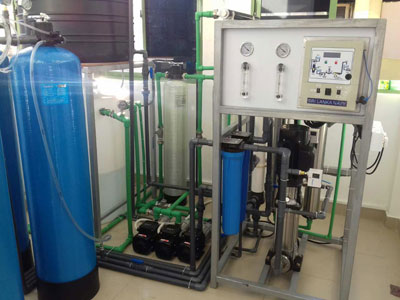
SLN produces ultra-purified water for dialysis

The UPW plant
An Ultra-Purified Water (UPW) plant produced by the Sri Lanka Navy’s (SLN) Research and Development (R&D) Unit was installed at the Dialysis and Kidney Transplant Unit of the Kandy Teaching Hospital on Friday, the SLN said. The facility can produce 10 tons of UPW per day, required for the dialysis process.
The SLN’s R&D Unit has produced this system utilizing their technological innovations and expertise. The market price of this UPW plant is estimated at Rs 13 million, while SLN’s R&D Unit had produced this unit at relatively low cost of only Rs 1.7 million. The purified water processed through this unit has been awarded the Association of Advanced Medical Instrumentation (AAMI) certification, and has received higher recognition from the Kidney specialists of the Kandy Teaching Hospital .
Empowering the national programme of Kidney Disease Prevention, the SLN is determined to install similar facilities at every hospital that possesses dialysis units. Up to now, the SLN has installed a total of 223 Reverse Osmosis plants throughout the country, and facilitates the civilian population with safe drinking water.
Source – 02/07/2017, Sunday Times, SEE more at – http://www.sundaytimes.lk/170702/news/sln-produces-ultra-purified-water-for-dialysis-248431.html
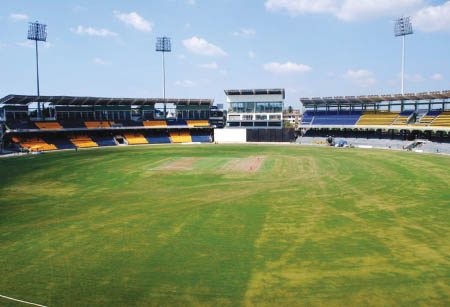
Wildlife officers to be deployed at Sooriyawewa Cricket Stadium to keep elephants away

The Wildlife Department will deploy teams of officers to prevent wild elephants from invading the Sooriyawewa Cricket Stadium when Sri Lanka hosts Zimbabwe for a series of one-day internationals at the Hambantota stadium.
Experts will be on hand for all three ODI games at the 35,000-capacity stadium, which is next to an elephant sanctuary, a wildlife official told AFP on Monday.
“There had been a few instances when elephants broke through the fence and invaded the pitch at night,” said the official, who asked not to be named.
“A jungle patch starts about 100 metres from the stadium and we are deploying 10 wardens to make sure that fans don’t stray into that area and provoke the elephants,” he told AFP by telephone from Hambantota.
He said there was a herd of about 25 elephants roaming the area, 240 kilometres (150 miles) south of Colombo, posing a potential threat to fans.
Source – 03/07/2017, see more at – http://www.sundaytimes.lk/article/1026970/wildlife-officers-to-be-deployed-at-sooriyawewa-cricket-stadium-to-keep-elephants-from-invading-stadium
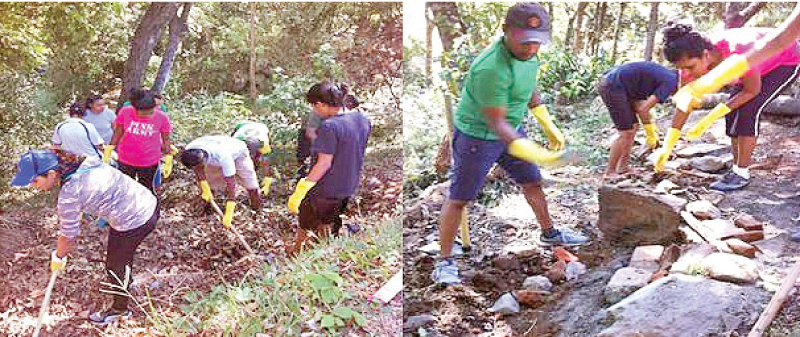
Enhancing environment of Knuckles Conservation Forest
Biodiversity Sri Lanka together with HSBC and IUCN Sri Lanka have been working together on measures to conserve and improve the mini watershed area of the Puwakpitiya Oya in the Knuckles Conservation Forest and Environmental Protection Area.
This engagement has been ongoing since August 2015 and is a three- year intervention. As a responsible corporate entity and a patron member of Biodiversity Sri Lanka, HSBC’s sustainability drives underpin identifying and addressing environmental, social and ethical developments which present risks or opportunities for environment and business. Technical assistance to the project is provided by the International Union for Conservation of Nature, Sri Lanka (IUCN).
The Knuckles Conservation Forest along with the Peak Wilderness Protected Area and the Horton Plains National Park have been declared as an UNESCO World Heritage Site since 2010.
Prior to this, it was declared as a conservation forest by the Forest Department in 2000 and an Environmental Protection Area under the National Environmental Act in 2007. The Knuckles area constitutes 30 percent of the watershed forest of the Mahaweli catchment – a major source of water for the agricultural sector of the country.
Although the forest landscapes in the Knuckles region are managed by the Forest Department and are legally protected, some landscapes are heavily degraded due to anthropogenic activities. Unsustainable land use practices and deterioration of watersheds severely threaten biodiversity and associated ecosystems. The main aim of the project is to restore the ecological value of the Puwakpitiya Oya sub-catchment area in order to enhance watershed functions and biodiversity in order to develop a replicable model to expand the programme to other sub-catchments of this vital forest range.
Puwakpitiya is a highly visited location by local tourists. Hence improving the visitor facilities of the Puwakpitiya (Illukumbura) office of the Forest Department is a part of this project. The HSBC funds have helped the construction of an information centre alongside the development of necessary knowledge products, which will benefit both the Forest Department and the visitors. This centre is expected to be declared open in August 2017.
Although adequate sanitary facilities are a basic need of any household, most of the toilets in the Puwakpitiya area are below standard hygienic levels. Regrettably, a majority of the people within the community do not recognize safe toilet facilities as a basic human need.
The project has improved and promoted the construction of adequate toilet facilities and raised awareness on the importance of sanitation.This is considered to be an eye opener to the villagers and it has been catalytic in getting the villagers to realize associated values. The project is expected to bring about a change at local level, which will have a lasting impact beyond the lifetime of the project.
Since the project area is located within the immediate catchment of the Moragahakanda reservoir, community members are being made aware of crucial conservation aspects through community discussions and meetings. Raising awareness among the community members could finally contribute positively to the conservation of the forest and its buffer zone together with the upper catchment of the Moragahakanda reservoir.
Recently a group of volunteers from HSBC made a field visit to observe and take part in work on ground. This volunteer programme included a visit to the Illukkubura Visitor Centre from June 16-18 where staff actively participated in landscaping and cleaning the centre. They also conducted a visitor awareness programme at Sera Ella.The team actively took part in field interventions and constructed contour barriers on the hilly edges to prevent soil erosion.
Upon completion, the project will have multiple environmental benefits. Firstly, the Knuckles region is well-known for its natural and aesthetic beauty centered on its breathtaking landscapes and associated fauna and flora.
Sustainable utilization of this valuable asset can be achieved through proper conservation and management practices.
Secondly, this region has been declared as one of Sri Lanka’s Natural World Heritage sites namely the Central Highland World Heritage Site because of its unique biodiversity, aesthetic value and ecosystem services. Hence, conservation and management practices will eventually lead to conserving this pristine and valuable ecosystem.
Enhancing watershed services, micro-climate regulation and carbon sequestration would provide both socioeconomic and environmental benefits. A monitoring system will be developed to ensure the sustainability and continuation of the positive outcomes of this project.
Source – – 03/07/2017, Daily News, see more at – http://www.dailynews.lk/2017/07/03/business/120676/enhancing-environment-knuckles-conservation-forest
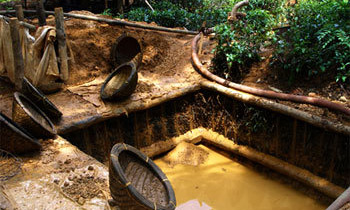
Gem mine collapses in Niwithigala; kills one injures two
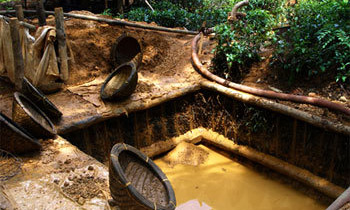
A miner had been killed and another two injured when a gem-mine collapsed at Madara in Niwithigala this morning, the Police said. They said an earth embankment of the mine collapsed on the workers, while they were mining. The injured were admitted to the Wathupitiwala Hospital and 34-year-old resident of Madara succumbed to his injuries.
Source – 02.07/2017, Dailymirror, see more at – http://www.dailymirror.lk/article/Gem-mine-collapses-in-Niwithigala-kills-one-injures-two-132017.html
Ritigala: Nature Lost Between History And Mystery
Sri Lanka’s ancient cities of Anuradhapura, Polonnaruwa, and Kandy form what most tourism brochures refer to as the Cultural Triangle. And rightfully so—five out of Sri Lanka’s six CulturalUNESCO World Heritage Sites (and one of two Natural sites) are found within these three corners.
Most visitors are drawn to these sites for the prospect of travelling back in time. Attractions such as Sigiriya also showcase how Sri Lanka was once ahead of the curve in terms of architecture and construction. But there is also a third factor that draws tourists: the spirit of adventure and the thrill of discovery. And that’s where an archaeological biosphere like Ritigala comes in.
A Strict Natural Reserve
Often overlooked by tourists, Ritigala is one of only three Strict Natural Reserves (SNR) found in Sri Lanka, making it a protected area dedicated to the survival of threatened species. In SNRs such as Ritigala, there is minimal human disturbance. Access to higher altitudes is reserved for scientific purposes and requires special permission from the Department of Wildlife Conservation.

Special permission is required to access higher elevations of Ritigala. Image courtesy Harrogate Medical Wine Society
The fascinating ecosystem of Ritigala features mixed forests upon the slopes of a mountain range, which include an eponymous peak standing 766 metres high—the tallest mountain in Northern Sri Lanka. Its defining features include the microclimates that enable the growth of a diverse vegetation. This occurs because the foot of the Ritigala range shares a similar climate to that of the surrounding region: hot and dry, while its summit is the opposite: cold and wet.
In a study on lichens at Ritigala, the University of Sri Jayewardenepura identified microclimates by the change in light and moisture at different elevations. As a result, the study showed a variation of lichen species on the mountain, whose distribution and diversity were determined by the microclimate that they grew in.
Monastic Ruins
Ritigala is also known for its preservation of an ancient monastery similar to Arankale. Built by King Sena I in the 9th century AD, the monastic ruins came to light in 1893, when Ceylon’s first Archaeological Commissioner, H.C.P. Bell, made an extensive account of the area. Prior to Bell’s expedition, Ritigala remained untouched since the 11th century, when the monastery was abandoned due to invasions from the Chola Kingdom.
It was also during this time that Sri Lanka’s capital shifted from Anuradhapura to Polonnaruwa, thus causing its many resident monks, known as the Pansukulikas, to leave Ritigala. Meaning ‘rag robes’, Pansukulikas were ascetic priests who detached themselves from monks in Anuradhapura, and practised extreme austerity by taking a vow to wear robes made of abandoned rags gathered mostly from cemeteries.

The Banda Pokuna is said to have once held 2 million gallons of water. Image courtesy writer
Entering the ruins, the Archaeological Department Office sits close to the bund of the Banda Pokuna— a man-made reservoir that measures a circumference of 1,200 feet and was likely used as a bathing pond for visitors entering the monastery. Greenery fills the reservoir today, which is lined with large stone steps and once held an estimated 2 million gallons of water. A path on the southern bank of the Banda Pokuna crosses a stream and leads to the monastery’s entrance along a stone walkway.

The stone walkway is one of Ritigala’s defining features and a testament to the craftsmanship of ancient times. Image courtesy writer
Roughly halfway along the walkway is one of three ‘roundabouts’. It is around here that a path leads to sunken courtyards, which once housed buildings belonging to the monastery. The nearest structure is referred to as Padhanaghara Pirivenas or ‘double-platforms’. These structures consist of two raised platforms formed by retaining stone walls that are oriented east-west. The eastern platform is rectangular, open, and without column bases, while the western platform is square, smaller, and features column bases that suggest a roof housing several rooms. The double platforms are linked by a stone bridge and surrounded by a small moat, which is believed to have provided natural air-conditioning when filled with water. Furthermore, the open platform suggests the practice of communal meditation while the other suggests meditation in private.

Padhanaghara Pirivenas or ‘double platforms’ are characteristic of Pansukulika monasteries. Image courtesy writer
To the right of the first pair of double platforms is the site of the monastery’s ayurvedic hospital. Remnants of tools still remain, along with large stone-cut baths where individuals would be immersed in ayurvedic oils. One of the most striking features of the ancient hospital, however, is the urinal stone, which seems to be the only decorated ruin found in forest monasteries. In the Handbook For The Ceylon Traveller, W. R. McAlpine and David Robson say:
The most plausible hypothesis suggests that they represent the architectural and ritualistic excesses of the orthodox monastic chapters to which the Pansukulikas were opposed, and the act of urination was for them a symbolic act of dissociation.

The urinal stone is the only decorated ruin found in forest monasteries. Image courtesy tripinshorts.files.wordpress.com
Mountains Of History
The Riti trees (Antiaris toxicaria) found on the middle slopes of the forest are commonly believed to have lent Ritigala its name. However, when Bell surveyed the area on his 19th-century expedition, he discovered two boulders that included an inscription of ‘arittha’—a reference to ‘Aritthapabbata’, the name given to Ritigala in Sri Lanka’s ancient chronicle of the Mahavamsa.
While ‘pabbata’ means ‘mountain’, ‘arittha’ is a Pali word with two meanings. The first— ‘dreaded’—refers to the indigenous Yakka tribes that once resided at Ritigala. Clouds and mist shroud the peak for most of the year, giving its microclimate more rainfall than the surrounding dry zone at the foot of the mountain. As an SNR, this vegetation is now protected by law. But McAlpine and Robson note that similar rules may have applied when the mountain served as a historical abode of the Yakkas. They mention a legend which went that “whoever violates their ancient injunction of removing no part of the vegetation from the mountain will be punished by the guardian-spirits”.

Clouds and mist shroud the peak for most of the year. Image courtesy amazinglanka.com
The alternative and perhaps more historically relevant meaning of ‘arittha’ is ‘safety’. The Mahavamsarecounts the fact that Prince Pandukabhaya took refuge at Ritigala, where he hid from his eight uncles for seven years in the 4th century BC. Pandukabhaya then amassed an army with the help of the resident Yakkas, slew his uncles, and marched on to establish the royal city of Anuradhapura. In the 1st century BC, King Dutugemunu camped at Ritigala before defeating the Chola king, Elara. Later in the 7th century AD, King Jetthatissa sought refuge in a similar manner to Pandukabhaya, before ascending the throne in Anuradhapura. Ritigala’s reputation as a safe haven continued into modern history when insurgents made it a stronghold in 1971. However, their battle was not as victorious, and they were eventually flushed out by the army.
Shrouded In Mist And Myth
Stories of battles fought at Ritigala have also found their way to folklore. One story recounts a duel between two giants—a warrior called Jayasena from Ritigala, and another giant named Gotaimbara, who is likely to have been one of King Dutugemunu’s giant warriors. Jayasena was decapitated during the battle, at which point the deity Senasura placed the head of a bear upon his torso, thus giving life to the local demon Maha Sona.

Over the course of history, Ritigala and its beautiful surrounding areas have seen plenty of conflict. Image courtesy wikimedia.org
Ritigala is also mentioned twice in the ancient Hindu epic of the Ramayana. First, when the monkey-god Hanuman used the mountain as a launch pad to leap back to South India after discovering where Ravana was holding Sita captive. Second, when Hanuman was sent to the Himalayas for the medicinal herb Sansevi to heal Lakshman (Rama’s brother) at war in Sri Lanka. Having forgotten which herb was required, Hanuman returned with an entire chunk of the mountain instead. On his way back, three pieces of this chunk are believed to have fallen around Sri Lanka. One of these spots is believed to be the summit of Ritigala, complete with contrasting microclimates and species of flora found nowhere else in the world.

Legend has it that the monkey-god warrior Hanuman dropped five pieces of the Himalayas in Sri Lanka – one of which is the summit of Ritigala. Image courtesy amoghayan.files.wordpress.com
Rare Species Of Flora
Beyond its mythical connections, The International Union for Conservation of Nature (IUCN) has described Ritigala as ‘a refugium for many rare and threatened species of plants’. As the world’s largest environmental network, the IUCN serves as the global authority on the natural world and is dedicated to its conservation through reputed expertise.
According to a case study published by the International Institute for Environment and Development, the ecosphere of the SNR hosts 417 plants. Of these, 337 are flowering plants (of which 57 are endemic to Sri Lanka), and three are endemic to Ritigala’s distinctive biome.
Conservation For The Future
In addition to the rare species of flora, the Ritigala SNR also boasts high biodiversity, which requires stronger conservation efforts.
A 2008 Biodiversity Baseline Survey notes a proposal to establish the Yan Oya National Park on the eastern boundaries of Ritigala. The park would serve as one of two corridors for elephants migrating between Kaudulla National Park and the Kahalle-Pallekelle Sanctuary—an area near the Hurulu Forest Reserve, where a suggested corridor linking Ritigala was also cited by the IUCN in 1990.

Ritigala could be Sri Lanka’s ninth UNESCO World Heritage Site. Image credit: Flickr/VSL Travels
Proper conservation efforts focused on its cultural and natural heritage could make Ritigala a potential contender for a ninth UNESCO World Heritage Site in Sri Lanka. The UNESCO website states that “To be included on the World Heritage List, sites must be of outstanding universal value and meet at least one out of ten selection criteria.” Ritigala seems to satisfy most of these at first glance.
An article last month quoted Education Minister Akila Viraj Kariyawasam (under whom the Department of Archaeology falls) as saying that UNESCO has warned the Sri Lankan Government that several World Heritage Sites may be de-listed due to poor maintenance, citing unlawful settlements as the primary shortcoming. While this is cause for alarm, Ritigala still holds an advantage as an SNR, since human settlements are prohibited. Although the area has a significant amount of cultural importance, Ritigala has the potential to become popular as a Natural World Heritage Site.
Visiting Ritigala
Ritigala is located in the North Central Province, less than 200 km away from Colombo, and can be easily accessed from the main hotspots within the Cultural Triangle such as Anuradhapura, Dambulla, Habarana, Polonnaruwa, and Sigiriya. The best time to visit is early morning, not only to escape any crowds but also to enjoy the serenity of the monastic ruins that make Ritigala a must-visit destination for any traveller.
https://roar.media/english/life/travel/ritigala-nature-lost-between-history-and-mystery/
Lankan entrepreneur produces high-quality biodegradable bags to protect the environment
The damage caused to the global environment by dumping of non-biodegradable polythene bags has posed a global threat to the environment as polythene does not perish even after 500 years, according to scientists.
Many Third World countries have so far not come up with a plausible solution to counter the use of polythene.
The problem of polythene dumping has grown over the years as garbage collecting centres particularly in Sri Lanka have not come up with a solution towards the safe disposal of polythene. Everything sold at grocery stores or supermarkets is wrapped up in polythene bags.
A Sri Lankan entrepreneur through his company Plastic Packaging (Pte) Ltd based at Ratmalana has now come up with a novel solution to address the polythene menace by manufacturing degradable bags using a different kind of chemical that is not harmful to the environment.
Although these bags look similar to those of polythene the difference is noticeable. These biodegradable bags perishes within a given period and pose no threat to the environment.
In an interview, Plastic Packaging (Pte) Ltd Chairman Mervyn Dias said his company has been manufacturing these polythene bags for export to the UK during the past three decades.
“We have specialized in manufacturing thin polythene bags for exports. When we first started manufacturing bags, it used to be 10 microns but now we manufacture three microns bags which makes the polythene cover very slim. These are the normal type of polythene bags that does degrade,” he said.
Manufacturing of polythene bags for export was good enough to earn money but the negative impact it had on the environment was tremendous. “Therefore we decided to embark on a project to manufacture bags that are environmentally friendly and that can degrade over a period of time.
We started this project about 20 years back by manufacturing oxo biodegradable and compost degradable bags.However we realized the additive used in the manufacture of these bags also took a long time to degrade as it had some polythene element in it.
Thereafter we experimented further and manufactured a compost and biodegradable bags in 2006 without any polythene content which was a starch based product. But there was a technical glitch where we could not bring the thickness of the bag to a low level due to non availability of technology.
Further experiments done over the years yielded positive results with the importation of a new chemical to bring down the thickness of the bag,” he explained noting that the these biodegradable bags were exported to the UK in 2009.
He said the bags are now being used in UK households to dispose their garbage in an environmentally friendly manner.
“The compost and biodegradable bags were first distributed free of charge to customers at supermarkets so that they can hand them over to waste collectors or else they themselves can even compost it at home. But after some time supermarkets stopped giving these bags free to householders.” 
A household requirement of these bags is about 10-15 bags which is quite sufficient for a month. The bags comes in different sizes but the bags used for collecting garden waste is much bigger.
“We export both type of bags to the UK in large quantities. A small bag will cost around Rs. 9 and a bigger garbage bag will cost around Rs. 30,” he added.
Asked whether it was feasible to sell these bags in Sri Lanka, he said a different type of bio degradable bags is sold in Sri Lanka as well. However it is not available at supermarkets because they are not sure whether it will sell or not.
The other advantage the consumers have is that these bags can be even used as freezer bags to store vegetables in a deep freezer. Thereafter the bags can be used to dispose kitchen waste, etc.
Referring to Municipal City garbage collectors, he said they have been instructed not to collect any polythene bags from households which has caused a problem The garbage collector does not know the difference between a compost biodegradable bag and a polythene bag.
He said the disadvantage of using polythene bags was that the throw away refuse in such bags does not perish along with the bag. He said the solution to the problem was by using biodegradable bags that can be taken away by garbage collectors to be dumped in a compost plant.
“We have also informed the Waste Management Authorities on the benefits of using biodegradable bags to dispose refuse without aggravating the problem.
But so far we have not received any response from them,” he said
Referring to a certification process by an international body called Vinbo in Belgium, he said the biodegradable bags are subject to a rigorous test to determine whether it contains any element of polythene and whether these bags are compostable or not.
“If such bags contain any semblance of polythene, the certification process is rejected debarring such products to be exported to the European Union countries.”
He said four tests are carried out to determine the certification process. The first one is that biodegradable bags have to disintegrate within a period of four months and the remaining small pieces have to go through a 2-2 mm mesh.
The second test was that the bags have to completely disintegrate within 180 days otherwise they are not considered as compostable bags.
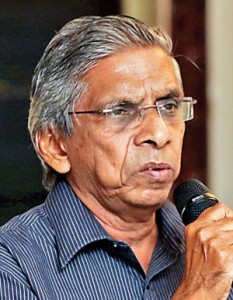
Mervyn Dias
The third test is to ascertain whether the bags contain any heavy metal that contaminates the soil.
The fourth test is checking out the quality of final compost and eco-toxicity. This involves testing to see if the germination and production of plants are not affected by the influence of composted packaging.
Once the above conditions are satisfied the bag is 100 per cent eco-friendly and certification is given.
The OK compost label certification guarantees compliance with EN 13432 and OK compost logos that are printed on the bags where customers can identify the compostable and biodegradable bags.
The small kitchen bags can hold a weight of 2-3 kg whereas a garden bag can carry a weight of 7-8 kg.
Asked for future projections of the company, Mr. Dias said that plans are underway to export biodegradable bags to supermarkets in France as well. (Jayampathy).
http://www.sundaytimes.lk/170702/business-times/lankan-entrepreneur-produces-high-quality-biodegradable-bags-to-protect-the-environment-247724.html
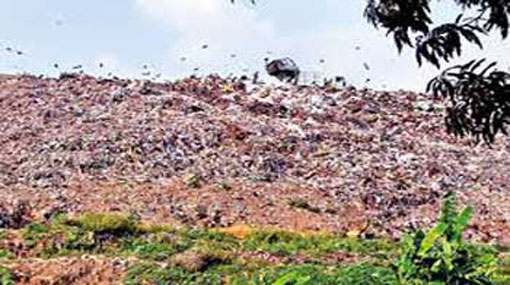
Staggering number arrested over illegal waste disposal in West. Prov.

Police reveal that 144 individuals have been charged and summoned to court over the illegal dumping of garbage in the Western Province in the space of two days.
They added that these charges were made during raids carried out by the army and the police department on the 26 and 27 of June.
The numbers of arrestees are as follows;
– Colombo (27)
– Nugegoda (37)
– Mount Lavinia (05)
– Gampaha (29)
– Kelaniya (14)
– Negombo (22)
– Kalutara (01)
– Panadura (09)
Police Department added that the arrested have been charged, and that such raids will be carried periodically in the future.
Source – 30/06/2017, Ada Derana, See more at – http://www.adaderana.lk/news/41635/staggering-number-arrested-over-illegal-waste-disposal-in-west-prov

Plans underway to set up Indo-Lanka solar power plant in Trinco

Sri Lanka is to kick-start the process of setting up a solar power plant in Trincomalee following discussions with India, which is partnering the Government in the initiative, Indian media reported.
“The next step would be to undertake a feasibility study and do the groundwork,” spokesman of the Ministry of Power and Renewable Energy Sulakshana Jayawardena told The Hindu recently.
In April the governments of Sri Lanka and India signed a Memorandum of Understanding, for cooperation in a host of development projects including the setting up of a Liquefied Natural Gas (LNG) plant in suburban Colombo and a solar power plant in Sampur, Trincomalee.
“We have the required land to set up the 50 MW solar plant envisaged in the MoU. We have to now work out the process of executing the project, in consultation with India,” Mr. Jayawardena said.
Sri Lanka had initially planned to set up a coal power plant in Sampur, through an international joint venture with India’s National Thermal Power Corporation. However, in September 2016 the Power Ministry scrapped the project citing environmental concerns.
A month later, Prime Minister Narendra Modi met President Maithripala Sirisena in Goa, on the side-lines of the BRICS summit, where he flagged the possibility of New Delhi partnering with Colombo in LNG and green energy projects.
Source – 29/06/2017, Times Online, See more at – http://www.sundaytimes.lk/article/1026706/plans-underway-to-set-up-indo-lanka-solar-unit
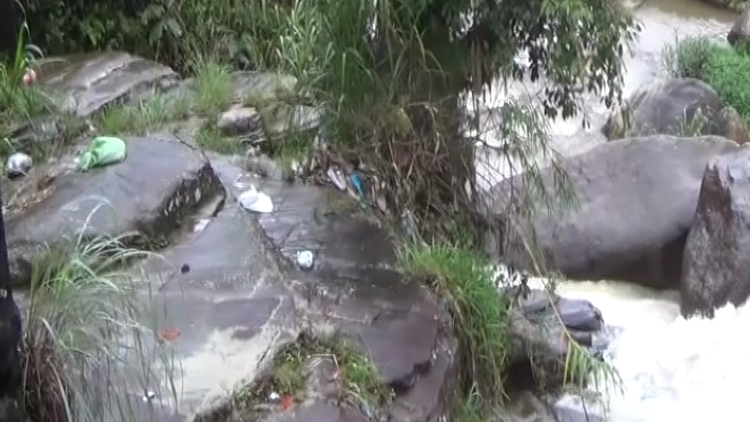
Residents face issues due to dumping of garbage to Dickoya

Residents have referred to the many issues they are facing due to the dumping of garbage to Dickoya during the night with the trash issue in the Hatton town aggravating.
The Hatton Police have launched an operation to nab persons who indiscriminately dump garbage. As a result the residents claim that certain groups are induced to discarding garbage to Dickoya during the night. As a result they pointed out that water in the Castlereigh Reservoir is being polluted due to the flow of water from Dickoya contaminated with garbage. Thus there is an imminent danger of the people using this water contracting diseases as well as the extinction of aqua life.
The residents are calling on the authorities to pay their attention to this matter and find a quick solution.
Source – 28/06/2017, ITN News, See more at – https://www.itnnews.lk/category/local-news/




